
The COMPLETE HISTORY OF BRITISH COMICS (abridged)
In September and October 2014, comic creator Neill Cameron published a series of articles on the British comics industry which he has very kindly given us permission to cross post here, as part of wider efforts by both him and many others to promote comics in the UK. We’re grateful to Neill for the chance to re-circulate this series of articles. You can also find this whole series archived as a reading list here, or todownload in ePub format (courtesy Sam Hardacre).
Welcome to the fifth and final part of my weeklong series of posts on comics and literacy. To sum up what we’ve covered so far: I believe that comics offer incredible opportunities for engaging children with reading and for developing their literacy skills, and I believe that we in this country have neglected and undervalued those opportunities to our mutual massive cost. We’ve covered:
- Why Reading Comics Matters
- Why MAKING comics matters, too
- Things that educators and parents can do, right now, to encourage this
- Some excellent comics for children, to get you started.
I wanted to wrap things up by talking a bit about what I think we can do next. I think there’s a growing awareness in this country of the important role comics have to play, and definitely a lot of progress is being made. But I still see there being a few puzzle-pieces missing; ideas and institutions that, if we could figure out a way to put into place, could bring about hugely positive changes.
So. Where do we go from here?
Here are a few ideas.
1) A NATIONAL NETWORK of COMICS CLUBS!
I talked a bit in
Wednesday’s post about how teachers and librarians might consider starting up a comics club, to give a space and a time in the week for interested kids to simply read comics, and talk about comics, and maybe have a go at making some comics. I think a really cool thing would be to then try and take this further and give people a means of linking up and sharing their work and ideas. FOR EXAMPLE, for the sake of argument: you could make it a national club, free to sign up for, and every week there’d be some set challenge or activity on the theme of writing or creating characters or drawing samurai alligators or whatever it may be, that all the geographically diverse members could have a go at and then share and display their work; people’s entries could then be displayed on the club’s website, with maybe some Professional Comics Types offering some feedback and helpful criticism. A
Comics Club, along the lines of something like the
Young Poets Network* or
Code Club, but for comics. Wouldn’t that be cool?
* Huge thanks to Kate Sayer of the Story Museum for cluing me in about the YPN, it sounds fantastic and I think offers a really useful example here.
The other nice benefit of having the website / mailing list aspect of it, apart from providing a point of connection between lots of individual school and library clubs, is that it would allow kids to join up and be a part of it who… maybe aren’t natural club-joiners? Bedroom comics geniuses across the land would have a way to be a part of something and to share their work and discover like-minded creators, without necessarily having to dive straight in with the whole potentially terrifying “talking to humans in real life about something you’re passionate about” thing. Giving people that chance to dip their toes into a wider world, and allowing them to ease in and discover it on their own terms.
I may just be thinking of Young Me here. I digress.
2) A CENTRAL RESOURCE of child-friendly comics
I talked about this a bit in
yesterday’s post, the difficulty facing parents and educators in knowing where to start with children’s comics, of finding good and suitable material. My ceaselessly amazing colleague
Sarah McIntyre has talked about this before, about how great it would be to have a central resource – a database / website full of information about child-friendly comics – ideally, with the ability for users to write and share their own reviews of books.
Basically, we just want to make it as easy as possible for parents and teachers and librarians and all those people who are not fortunate enough to already be Giant Comics Nerds to discover the good stuff, and to feel confident to start sharing it with their kids. And, even better, for kids to find it for themselves.
Just to let you know that Melanie (Library Mice) and I are compiling a new booklist for the Federation of Children’s Book Groups focusing on comics and graphic novels- it will be ready April 2015, and then free to any one who wants it eg schools, clubs, individuals.
…which sounds fantastic, and is a really positive development. Let’s do more!

Artwork from The Awesome Comic by © 2014 Erin Snape
3) A similar CENTRAL RESOURCE of comics creators who do workshops!
Again, something that both Sarah and I have talked about before. It would be brilliant to tie this into the aforementioned website / database of kid-friendly comics, to also provide information on creators who visit schools and libraries to do workshops. (While we’re on the subject, please refer to
this excellent post of Sarah McIntyre’s that gives tons of invaluable advice to schools and libraries about how to host a successful author visit, and includes a huge list of creators who offer workshops.)
Essentially, I’d like a lot of the kind of things I’ve been trying to talk about in this week’s posts to be maintained and updated as a central resource, easily accessible to educators and parents – lists of great, age-appropriate comics, lists of comics practitioners who do workshops, details of upcoming courses and events across the country. I think A Website could very handily contain all this, but whose website? The website of a body that does not quite exist yet, and which I shall for the purposes of this flight of fantasy refer to as The Comics Agency.
The Comics Agency. The Comics Advisory Board. The Awesome Ninja Comics Squad. Call it what you like, the basic idea is just of having a dedicated body – a dedicated place on the internet, and ideally a dedicated place in the actual real world, too – devoted solely to sharing information and ideas and resources and best practice and constantly spreading the message that, basically, everybody should be reading comics, because they are NIFTY. There are non-profit organisations in the US doing excellent work in this kind of area –
Reading With Pictures and
Comic Book Classroom – and I’d love to see something similar happen over here.
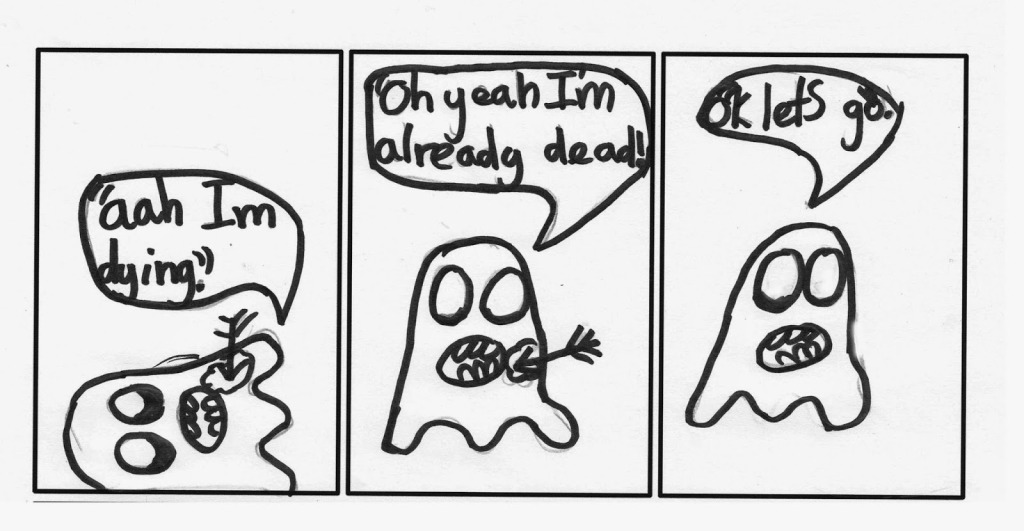
Artwork from The Awesome Comic by © 2014 Hector Day
4) WORLD DOMINATION
Once you’ve got those pieces of the puzzle in place, once you’ve built that framework: then, I think you could start to really have some fun. Have some fun and also, potentially, do some amazing things. How about setting up a scheme where people are easily able to chip in to donate graphic novels or comic subscriptions to under-resourced schools, for starters? Or how about this: we figure out how much it would cost to buy one awesome comic for EVERY SINGLE CHILD IN THIS COUNTRY. And then we run a kickstarter for exactly that much money.

Let’s go back for a second to where this series of posts started, thinking about the
Read On, Get On campaign. We began with the demonstrable fact that learning to read changes children’s lives for the better, and the firm conviction that comics can, have been and should be a huge part of
how children learn to read. If we’re not making use of this amazing asset, this incredibly cool and powerful tool in the literacy toolbox, then frankly we’re failing generations of children. And we’ve been doing that for a while now. And I think it’s time we started doing better.
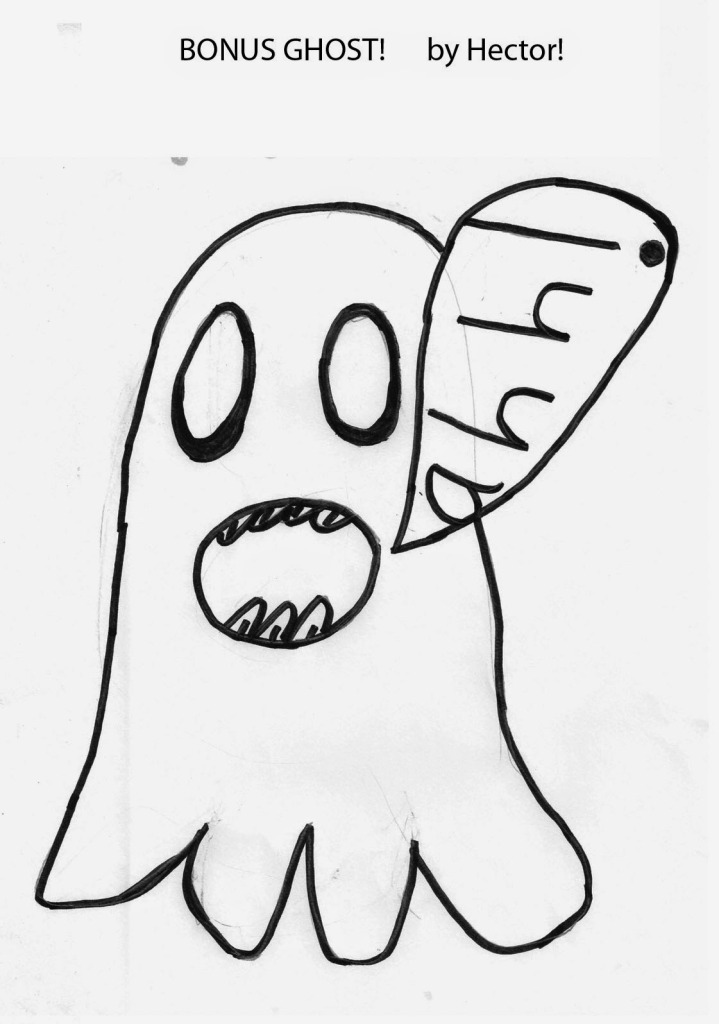
Bonus Ghost!
POSTSCRIPT: I’m pretty much reaching ‘put up or shut up’ point here. I think secretly my motivation in writing this monstrous week long series of posts was to basically talk myself into stopping talking, and actually starting to do something about all this stuff. THINGS are underway, and PLANS are being formed. If you would like to hear more about THINGS and PLANS, or get involved in the discussion, or sign up to join the Awesome Ninja Comics Squad, then in the first instance give me a shout on Twitter – you can find me at @neillcameron, or throw in ideas using the #ComicsAndLiteracy hashtag. Let’s see what we can do.
Neill Cameron is a cartoonist and writer, creator of the young adult graphic novels Mo-Bot High and the instructional How To Make Awesome Comics. Since 2011 his work has appeared in the weekly children’s comic The Phoenix, where he produces – amongst other things – the dinosaur adventure serial The Pirates of Pangaea (with co-writer Daniel Hartwell), the robotic soap opera comedy Mega Robo Bros, and (with artist Kate Brown) the Cornish-set fantasy drama Tamsin and the Deep.
Neill is also currently artist in residence at The Story Museum in Oxford, where he has contributed several large-scale comic strip installations and is involved in comics-based education and activities.
Neill frequently travels the country giving workshops in schools, libraries and at festivals, and is a passionate advocate for the role comics can play in fostering literacy and encouraging children’s creativity.
One of many guest posts for downthetubes.
Like this:
Like Loading...
Categories: British Comics, Comics Education News, Creating Comics, Featured News, Features
Tags: Comic Book Classroom, Comics Clubs, Eliza Day, Erin Snape, Federation of Children's Book Groups, Hector Day, Neill Cameron, Opinions, Playing By The Book, Read On Get On, Reading With Pictures, Sarah McIntyre, Story Museum, The Awesome Comic, Zoe Toft
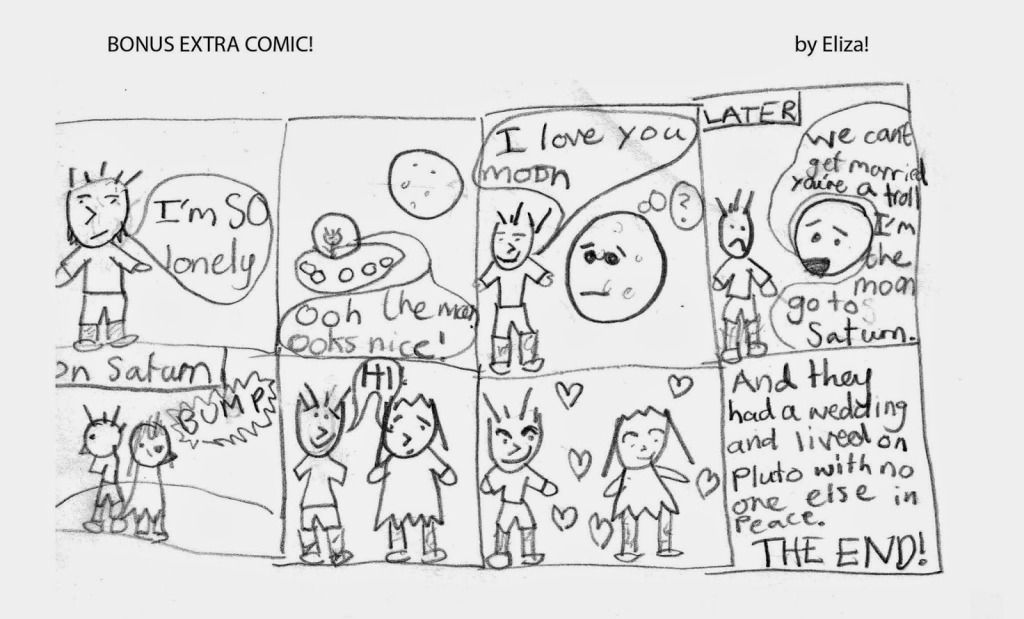





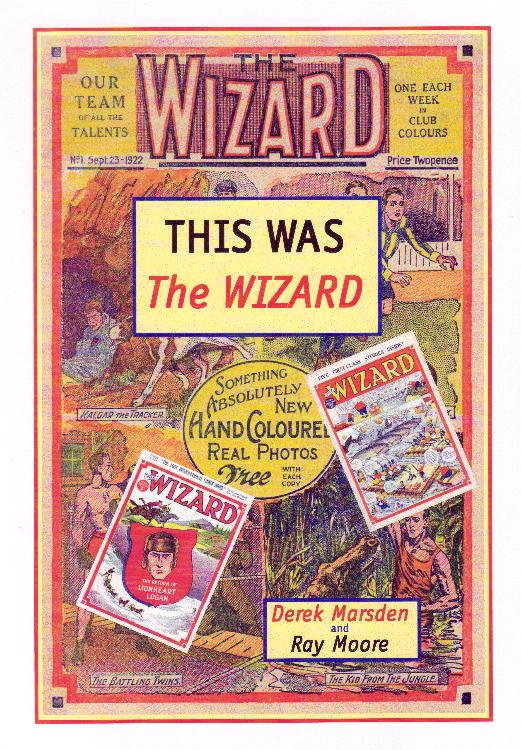 In Review: This Was The Wizard
In Review: This Was The Wizard  Comics and Literacy, Part 4: Comics For 7-Year-Olds by Neill Cameron
Comics and Literacy, Part 4: Comics For 7-Year-Olds by Neill Cameron 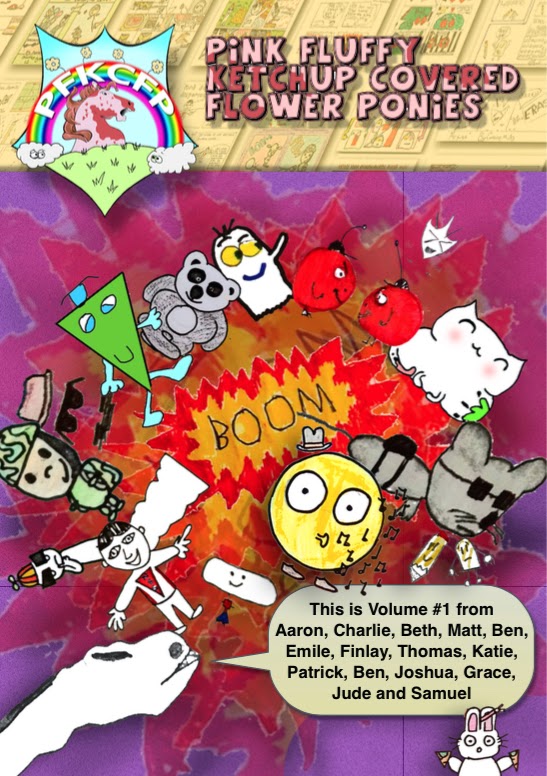 Comics and Literacy, Part Two: The (New) Golden Age of Children’s Comics by Neill Cameron
Comics and Literacy, Part Two: The (New) Golden Age of Children’s Comics by Neill Cameron 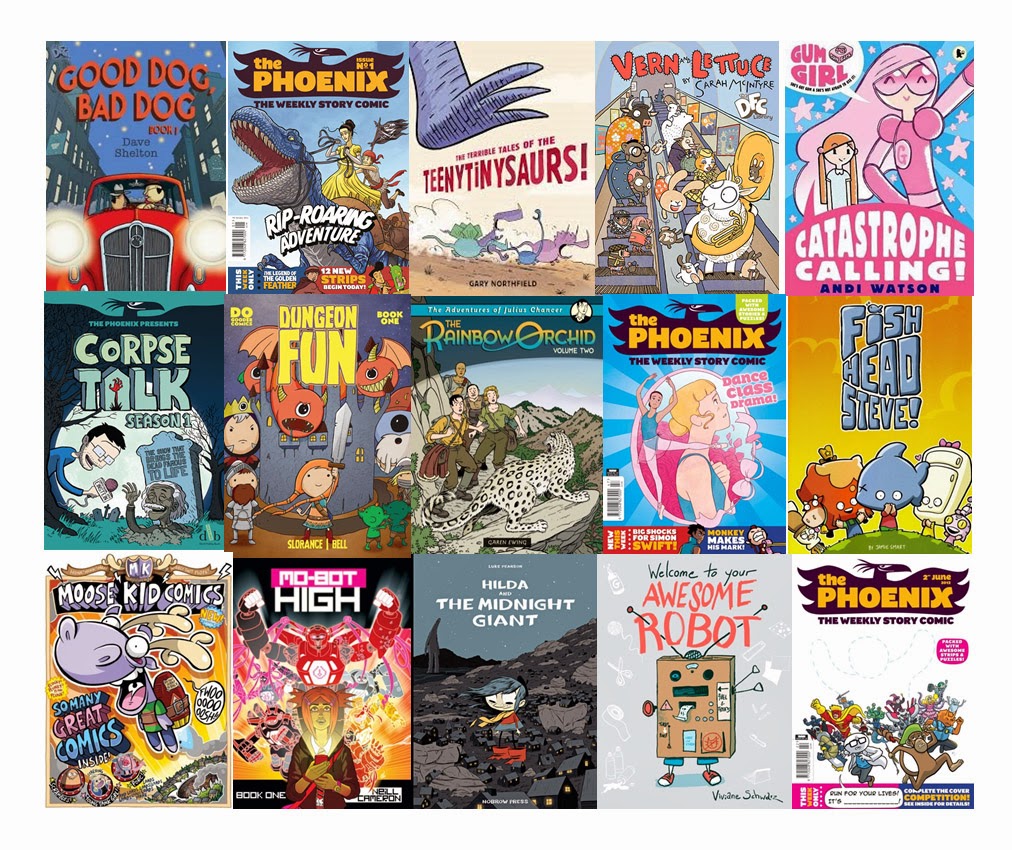 Comics and Literacy Part One: Why Reading Comics Matters by Neill Cameron
Comics and Literacy Part One: Why Reading Comics Matters by Neill Cameron